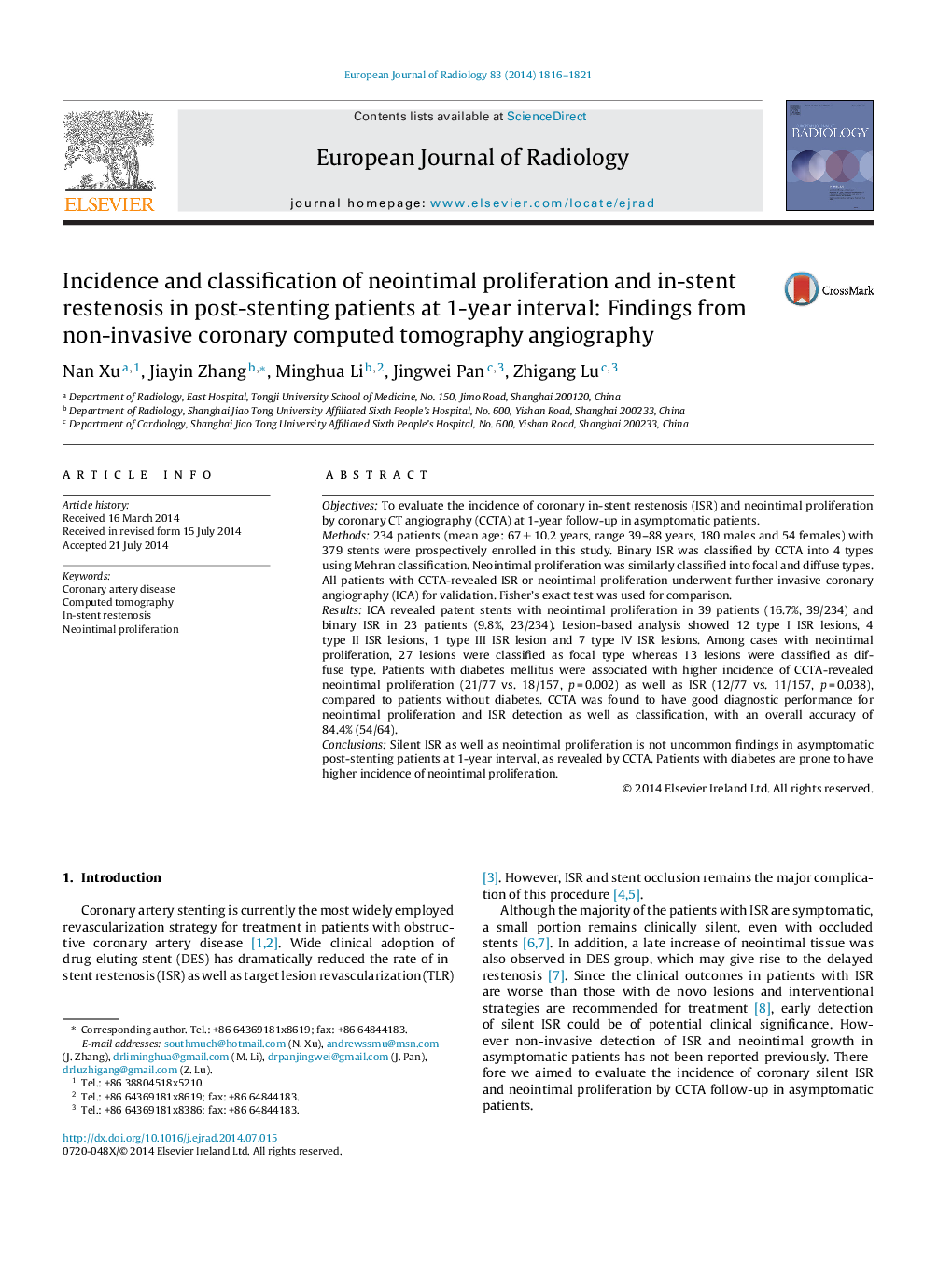| Article ID | Journal | Published Year | Pages | File Type |
|---|---|---|---|---|
| 4225366 | European Journal of Radiology | 2014 | 6 Pages |
•The incidence of silent in-stent restenosis at 1-year as revealed by CT is 7.6%.•The incidence of neointimal proliferation at 1-year as revealed by CT is 12.6%.•Diabetes are associated with higher incidence of neointimal proliferation.
ObjectivesTo evaluate the incidence of coronary in-stent restenosis (ISR) and neointimal proliferation by coronary CT angiography (CCTA) at 1-year follow-up in asymptomatic patients.Methods234 patients (mean age: 67 ± 10.2 years, range 39–88 years, 180 males and 54 females) with 379 stents were prospectively enrolled in this study. Binary ISR was classified by CCTA into 4 types using Mehran classification. Neointimal proliferation was similarly classified into focal and diffuse types. All patients with CCTA-revealed ISR or neointimal proliferation underwent further invasive coronary angiography (ICA) for validation. Fisher's exact test was used for comparison.ResultsICA revealed patent stents with neointimal proliferation in 39 patients (16.7%, 39/234) and binary ISR in 23 patients (9.8%, 23/234). Lesion-based analysis showed 12 type I ISR lesions, 4 type II ISR lesions, 1 type III ISR lesion and 7 type IV ISR lesions. Among cases with neointimal proliferation, 27 lesions were classified as focal type whereas 13 lesions were classified as diffuse type. Patients with diabetes mellitus were associated with higher incidence of CCTA-revealed neointimal proliferation (21/77 vs. 18/157, p = 0.002) as well as ISR (12/77 vs. 11/157, p = 0.038), compared to patients without diabetes. CCTA was found to have good diagnostic performance for neointimal proliferation and ISR detection as well as classification, with an overall accuracy of 84.4% (54/64).ConclusionsSilent ISR as well as neointimal proliferation is not uncommon findings in asymptomatic post-stenting patients at 1-year interval, as revealed by CCTA. Patients with diabetes are prone to have higher incidence of neointimal proliferation.
